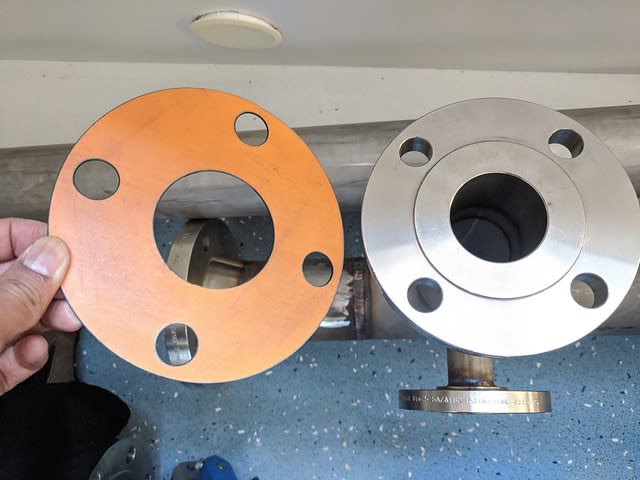ca2n
Mechanical
- Jul 14, 2022
- 3
Hello all,
First post here, so please be kind![[smile] [smile] [smile]](/data/assets/smilies/smile.gif) .
.
Long story short, I was tasked to (laser) cut a given gasket material to size to fit some flanges.
A particular flange was of the type B16.5 2-inch WNRF S40S 150lb.

I've sourced the gasket dimensions from the Piping World website.
Upon seeing the cut gasket and flange side-by-side, I'm having doubts as to whether or not the gasket dimensions I've sourced are indeed for the flange I have. In particular, it is the mating between the raised face of the flange and the gasket that is worrying me.

Have I prepared (cut) the correct gasket for this particular type of flange? Should have I sourced the gasket dimensions elsewhere?
Any advice appreciated.
First post here, so please be kind
![[smile] [smile] [smile]](/data/assets/smilies/smile.gif) .
.Long story short, I was tasked to (laser) cut a given gasket material to size to fit some flanges.
A particular flange was of the type B16.5 2-inch WNRF S40S 150lb.

I've sourced the gasket dimensions from the Piping World website.
Upon seeing the cut gasket and flange side-by-side, I'm having doubts as to whether or not the gasket dimensions I've sourced are indeed for the flange I have. In particular, it is the mating between the raised face of the flange and the gasket that is worrying me.

Have I prepared (cut) the correct gasket for this particular type of flange? Should have I sourced the gasket dimensions elsewhere?
Any advice appreciated.


![[wink] [wink] [wink]](/data/assets/smilies/wink.gif)